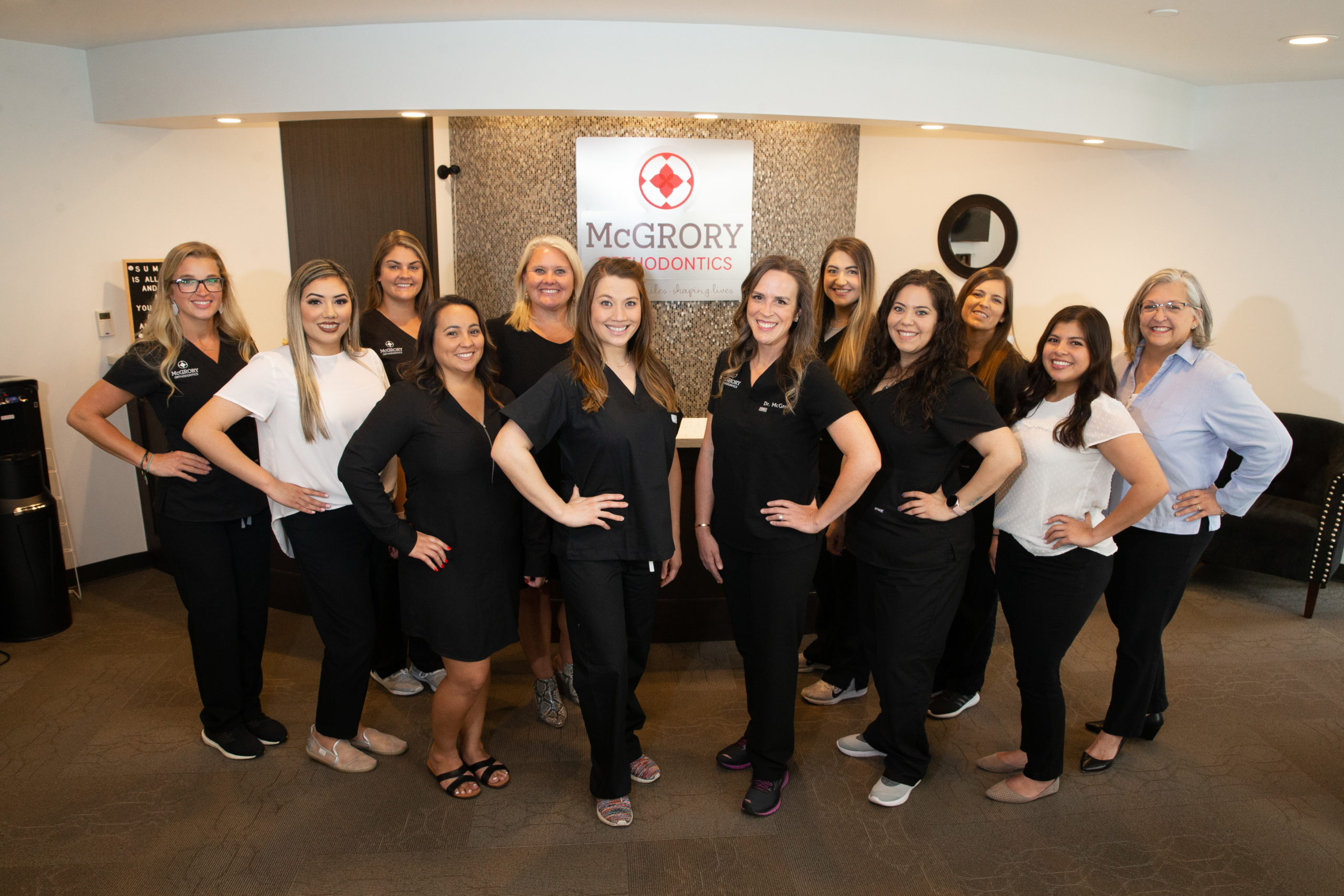At McGrory Orthodontics, we know that facing the possibility of tooth extraction is never something our patients are excited to hear. We’re dedicated to working to ensure that our Pearland and Bellaire patients have access to the healthiest and happiest smiles possible. While restorative and preventative care is always going to be our go-to solution, there are situations where extraction is sometimes going to be the best choice for your smile. We’ve gotten together with Dr. McGrory to discuss the ins and outs of extraction vs. non-extraction therapy. We’ll address which option is right for you, the implications of extraction therapy on your smile, and whether there are alternatives to extraction. So, let’s dive in and find out!
Extraction therapy: Understanding the concept
Let’s start with the basics. What is extraction therapy? As the name suggests, extraction therapy involves addressing orthodontic or dental issues that pose significant risks to your overall oral well-being by removing the problematic tooth. In other words, extraction therapy, also known as tooth extraction or orthodontic extractions, is a procedure employed in orthodontics to create space and facilitate the proper alignment of remaining teeth within the bone. It is typically performed as part of orthodontic treatment to correct dental malocclusions and misalignments of the teeth and jaws.
When extraction therapy is recommended, you and your orthodontist have decided together that tooth removal is the best step for your smile. Dr. McGrory and Dr. McCarty evaluate several factors, including malocclusion severity, dental arches, and space availability for tooth movement. Additionally, she’ll consider the overall facial profile and requirements for a healthy bite before choosing extraction therapy. It’s never an autopilot decision!
Non-extraction therapy: The go-to solution
On the other hand, non-extraction therapy involves various therapeutic options that do not involve teeth removal. Instead, this approach focuses on utilizing the existing space within the dental arches and employing techniques to create additional room for tooth movement. This way, you can get your optimal smile and a healthy bite without tooth extraction.
Non-extraction therapy is ideal for patients with mild to moderate crowding as long as the crowding is manageable and can be effectively addressed without removing teeth. In such cases, standard orthodontic appliances like braces or aligners can gradually shift the teeth into their proper positions within the available space.
Non-extraction therapy is often recommended if your facial profile is already well-balanced and harmonious. In these instances, Dr. McGrory or Dr. McCarty will work to keep the natural proportions of your face healthy and happy without significantly altering the tooth-to-lip relationship. Consider yourself lucky if you fall into this category!
Additionally, non-extraction therapy is more feasible when you have favorable jaw relationships and a fully functional bite. This approach is usually the preferred choice if your upper and lower jaws align well and your bite is stable and effective. It means that your teeth fit together correctly when your jaws are closed, and you don’t have significant issues with chewing or speaking.

What if my orthodontist recommends extraction?
If Dr. McGrory or Dr. McCarty recommends extraction as the best course of action for your specific situation, there’s no need to worry. Our team is highly skilled and trained to ensure the procedure goes smoothly and comfortably for you.
Modern extraction therapy techniques minimize the procedure’s invasiveness, making your experience quick and easy. Dr. McGrory and Dr. McCarty employ a conservative approach that preserves as much dental tissue as possible while ensuring you get the perfect results.
These minimally invasive extraction techniques eliminate any trauma to surrounding tissues, promote faster healing, and enhance patient comfort throughout the treatment process. So, even if extraction is recommended, you can be confident that you won’t have to deal with any severe discomfort or long-lasting orthodontic issues surrounding the missing tooth.
Understanding the differences between extraction therapy and non-extraction therapy is crucial when it comes to deciding the best approach for your smile. Of course, we’ll always work to save the tooth first, but sometimes it’s best to go ahead and get rid of a problem tooth. The final decision will depend on several factors your orthodontist evaluates, such as the severity of your malocclusion, facial profile, and bite functionality.
We aim to provide you with the healthiest and happiest smile possible at McGrory Orthodontics. Whether we find a way to save the tooth or your orthodontist recommends extraction, you can trust our expertise and commitment to the best possible result.

More questions? No worries!
Now that you’ve read up on extraction vs. non-extraction therapy, it’s time to start your smile journey! At McGrory Orthodontics, consultations are always 100% free of charge, and our caring and empathetic staff will take your smile all the way to the finish line. Call today to schedule, or just fill out this form, and let’s see what your smile can do!

